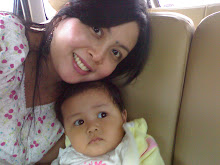| If you want your baby to get into good sleep habits, you need to do your bit, too.
There’s an old joke: “Anyone who says they slept like a baby has obviously never had one.” But, as I well recall, it’s no joke when you’re grappling with a baby who seems to think a decent sleep is 40 minutes long. |
| Plunked family centers report that about half the new mothers coming to see them are there because of problems with their babies’ sleeping patterns. Kay Morgan, Plunked nurse and unit manager for the Grey Lynn family centre, says the problems usually fall into two areas – the baby who will fall asleep in your arms but wakes the instant she reaches the cot, and the baby who snacks and snoozes, and so rarely sleeps for long. In both cases, of course, it’s actually both baby and mother who have a sleep problem, as mothers get more and more worn out. |
| It helps to know a bit of the theory about sleep before tackling some practical solutions. The textbooks tell us that in babies there is a developmental progression of sleep behavior. Newborns alternate between sleep and wakefulness every three to four hours, in response to hunger. As the baby grows this should shift to a diurnal pattern with longer periods of sustained sleep at night – up to eight hours. That’s the theory. |
| Patricia Aley is a former Plunked nurse who specializes in treating sleep problems for young babies. After years working as a psychiatric nurse and then a Plunked nurse, she says she became aware that new mothers were often missing the cues that their babies needed sleep. Her guidelines for settling a young baby are straightforward.
“First, sleeping and feeding can’t be separated. You have to be sure that the feed has been an efficient feed, and if the baby is dozing off on the breast, take her off, start her again and make sure she’s feeding efficiently.
“The next step can be scary for many mothers – you have to put the baby down to sleep, awake. So, you give the baby a play period at the end of each feed, and babies of three weeks and older will happily manage that.
“Then you have to be alert for the baby’s tired signs – she may be grizzly, or she may start making jerky movements, opening and closing fists, yawning or crying. You have to be attuned to your baby’s individual signs. “Then put the baby – awake – into her bed, and let her fall asleep by herself.” |
| Patricia says that when you hear a tired cry from the cot, it’s a legitimate sign in its own right, not a signal for mum to go in and comfort rock or pick up the child. “Nine times out of 10, the child will be asleep in 10 minutes, and it’s important that they learn to do it themselves.” Kay Morgan agrees, and says it’s important to know that while some babies naturally get into a good sleep rhythm, most have to learn it. “It’s a learned practice. People think if a baby is tired they will fall asleep anywhere, but that’s just plain exhaustion.” A big part of the work of Plunked nurses is showing new mothers how to recognize those sometimes subtle “tired signs” in their own babies. |
| Kay says getting a baby into a regular routine means they will often start extending their sleeps longer at night. Again, feeding can’t be separated from sleeping, so the aim is to ensure the baby has a good, efficient feed before they go to bed for the night. It’s a case of “baby rarely knows best”, Patricia Aley says. “Sometimes people will tell you that the baby will stop feeding when he’s had enough, but that’s not always true. And people say the baby knows when it needs to sleep, but that’s no truer of babies than it is of adults. Just as we’re able to delay sleep with distractions, so can the baby distract itself with all the things going on around him.” |
| Be aware also that babies will go through growth spurts, typically at six weeks, three months and five months. The baby will be hungrier and so will increase the amount of feeds, and shorten his sleep times, but it’s usually a temporary hurdle. While both Kay Morgan and Patricia Aley say regularity and routine is important, they’re not in favor of totally rigid routines. |
| “We are creatures of habit, but we’re all capable of varying our routines, and so if you have to take the baby out, then you just have to,” says Patricia. Kay says: “You have to decide what you’re comfortable doing. We’re not suggesting a crying contest, as some programmers do, and we like to look at every individual situation. We look at what’s age appropriate, whether there are any other factors such as a baby with reflux, but mostly it’s just learning to recognize the tired signs in a baby, and then getting them into bed.” |
| You can start to teach a baby the difference between day and night even from a young age by keeping playtime, talking and cuddling to the day, and at night keeping noise and lights low, and talking to a minimum.
And as for sleeping like a baby – well, babies do have different sleep patterns to adults. They spend more time in REM (rapid eye movement) sleep in which dreams occur, which means they have more transitions between light and deep sleep. That, in turn, is why they wake up more often. Until they learn to soothe themselves back to sleep, that may mean more interrupted nights. Children don’t have truly adult sleep patterns until the age of three or four. |

No comments:
Post a Comment